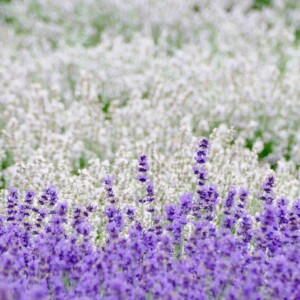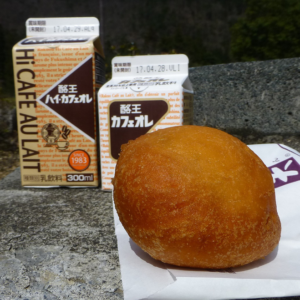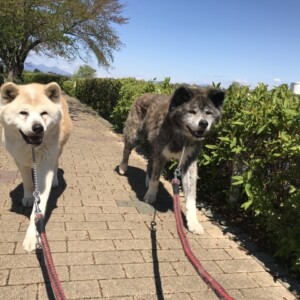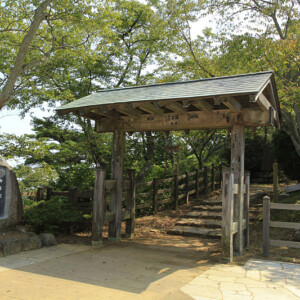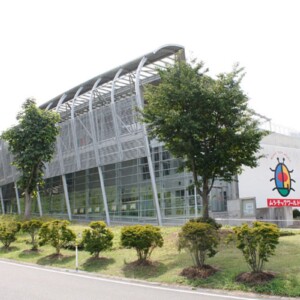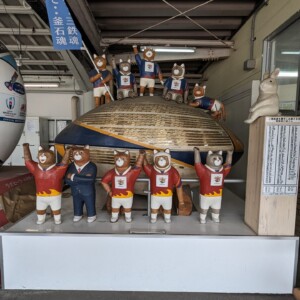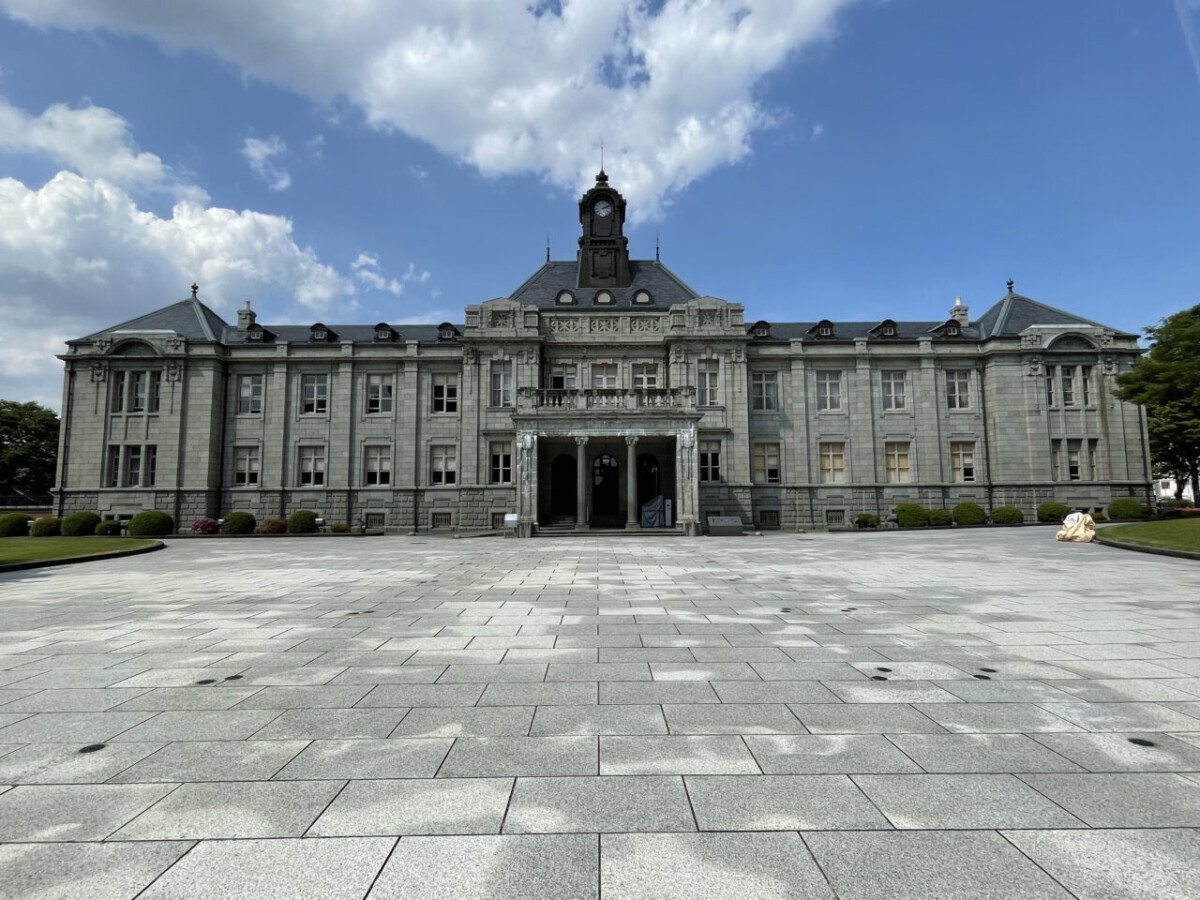
[Part 2] A day trip to Yamagata city, a sightseeing trip with a 2-5km radius from Yamagata Station on the Senzan Line [Yamagata Prefecture]
In the first part, we took the Senzan Line from Kunimi Station to Yamagata, and took a stroll from Kasumigaoka Park to the nearby Yamagata Museum of Art and Mogami Yoshiaki History Museum, where we got a glimpse of Yamagata's culture and history.In the afternoon, we will head towards Nanokamachi and stroll around the city center
It was around 1pm and I was starting to get hungry so I decided to have lunch
I just vaguely thought, "I want to eat soba noodles," so I hadn't thought about which restaurant to go to
I wanted to eat at a soba restaurant I found while heading towards Nanukamachi from near Kasumigaoka Park, but perhaps I chose the wrong route, as I couldn't find the restaurant
Before we knew it, we had arrived at Nanakamachi Goten Weir
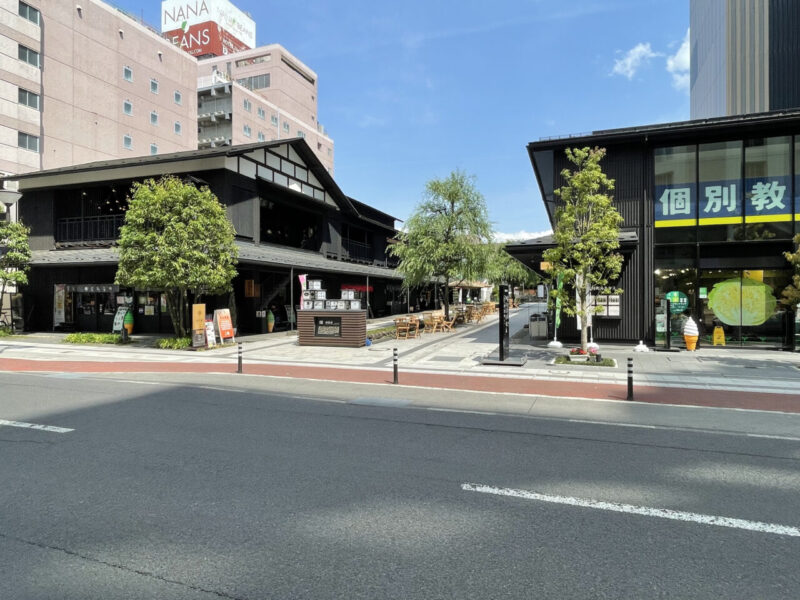
When I arrived at Goten Weir in Nanukamachi and looked at the information board, I saw a sign for "Soba Restaurant Shojiya" and decided to go there immediately
I had previously heard from a friend in Yamagata that "Shojiya is recommended if you want to eat soba," so it was perfect
I sat down and looked at the menu, and saw that there was a limited quantity of "Kanzarashi Soba" (cold soba noodles)
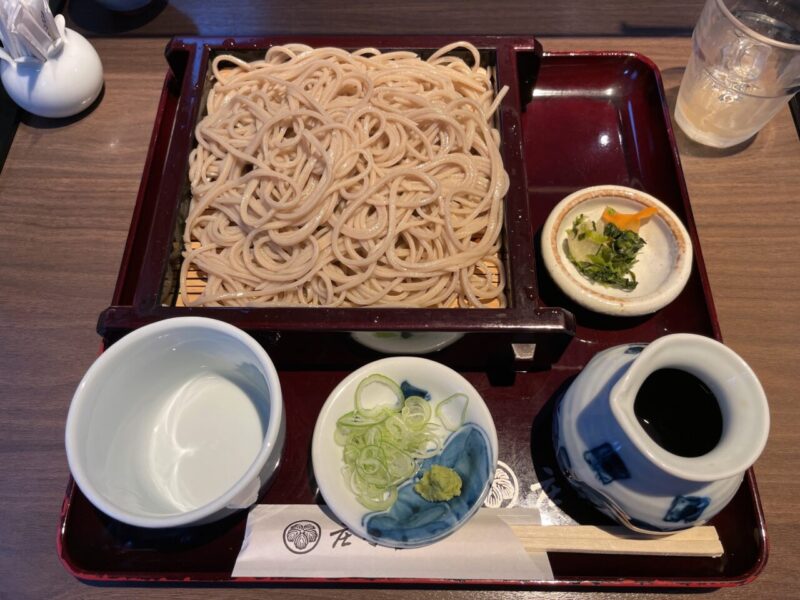
Unlike new soba, soba that has been exposed to the harsh cold of Yamagata has a sweeter taste and is more refined than regular soba. It has a mild, natural soba flavor and is delicious
Thanks for the meal.
After eating soba and feeling satisfied, we took a quick stroll around Gotenzeki before heading to our next destination
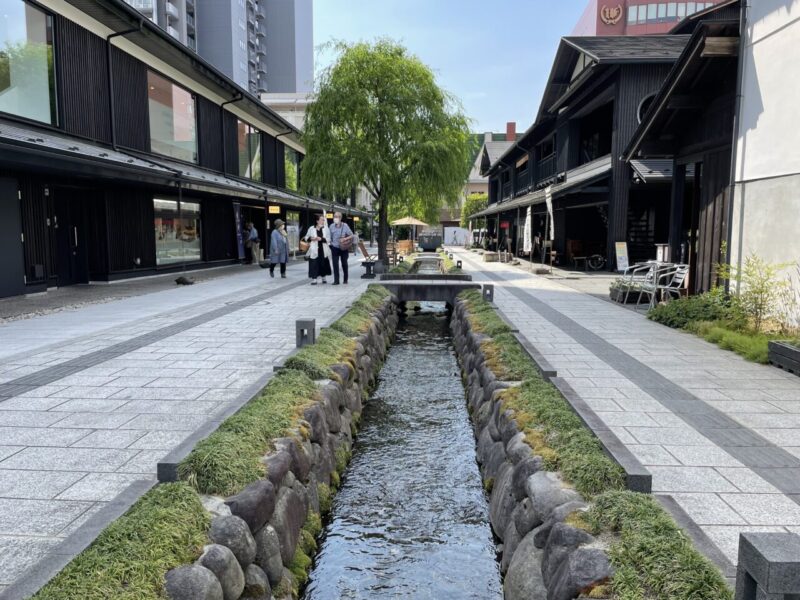
The Nanukamachi Goten Weir in Yamagata City is one of the "Yamagata Five Weirs" that was built around 400 years ago, in the early Edo period, by Torii Tadamasa, the lord of Yamagata Castle, to ensure water for daily life and agriculture in the city of Yamagata
The Nanokamachi Goten Weir was built to restore the lifestyle of Yamagata citizens at that time, and to serve as a place of relaxation for citizens and a commercial facility that utilizes the waterway

Now let's head to our next destination, Bunshokan

I knew about Bunshokan, but this was my first time going inside
Bunshokan is the nickname for the facility that has been restored and is currently being used as the former Yamagata Prefectural Office and Assembly Hall
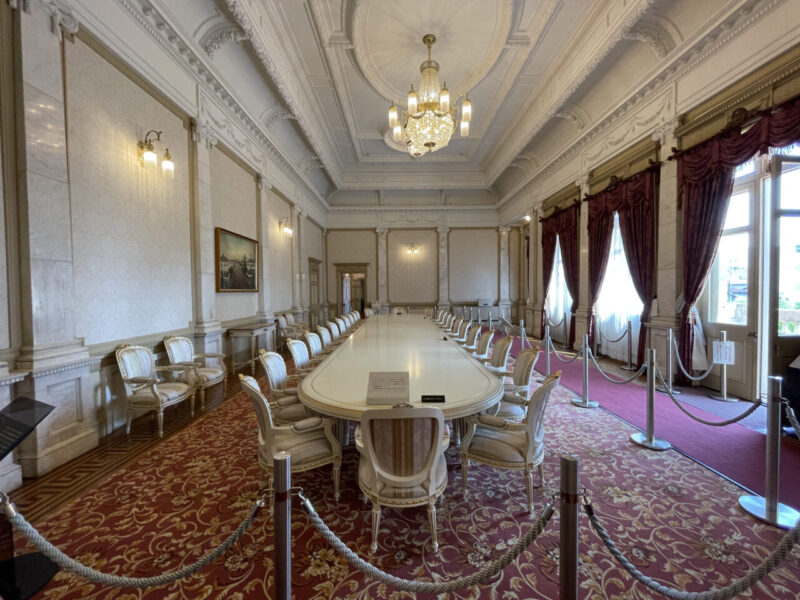
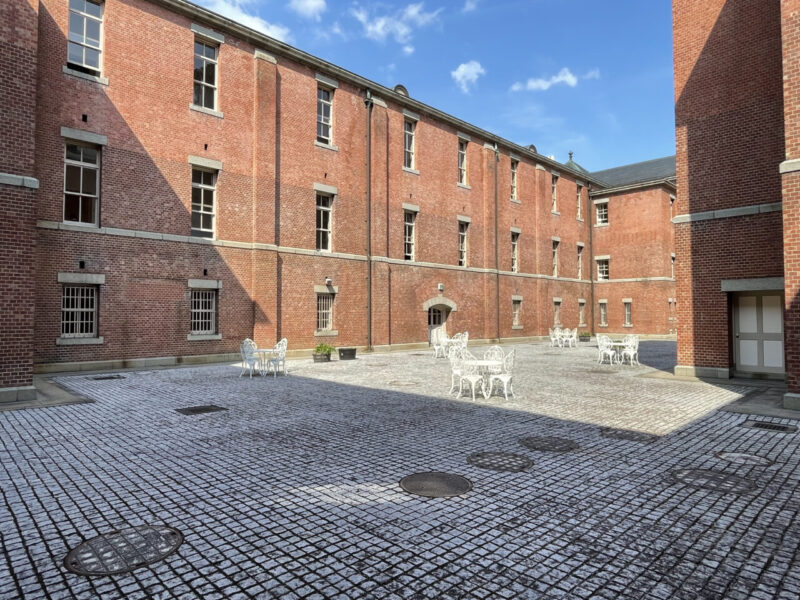
As I strolled around the building, I was surprised not only by the restored interior, but also by the fact that it was being used as a regular facility by local high school girls
Normally, such a historic building would be subject to strict restrictions and treatment, but high school girls are freely using the facilities in preparation for an art exhibition being held at Bunshokan
I was really moved by this
I think it's great that children can actually touch and use it, rather than keeping it away because it's something to protect
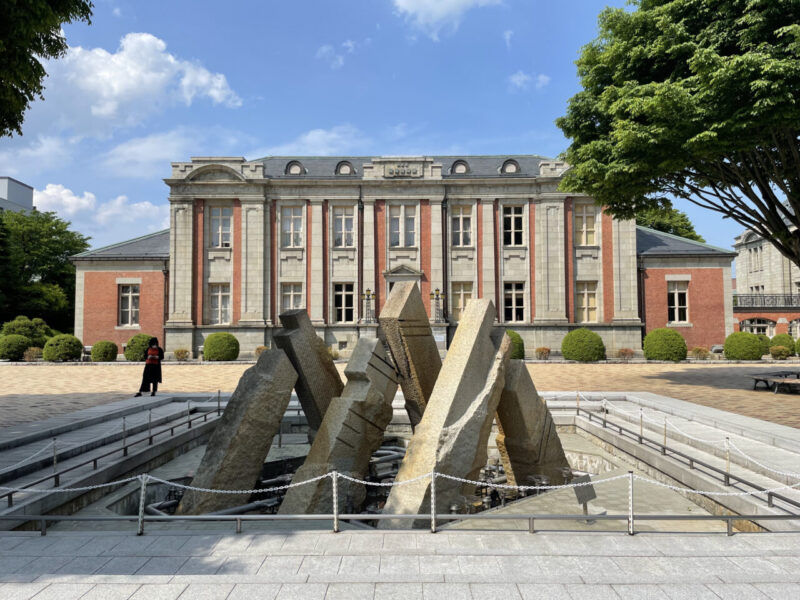
The same can be seen at the former Yamagata Prefectural Assembly Building next door, where the Yamagata Philharmonic Orchestra practices, which can be viewed from the second floor
I thought that this was a rare experience, so I listened carefully for about an hour
It's a luxurious time
I was very satisfied, so I decided to do some shopping and head home
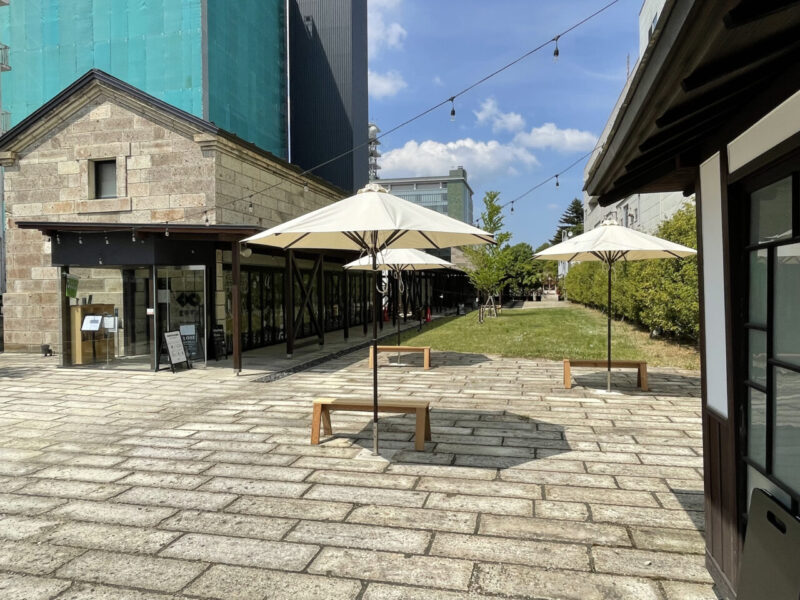
We stopped off at "gura," a new spot that opened in 2018 in Hatagocho, very close to Goten-zeki Weir, where we stopped for lunch
"Gura" is a space centered around a stone storehouse that has been restored using stone from the Meiji era, an earthen storehouse that is over 100 years old and has been restored through earthquake-resistant reinforcement, and a plaza that functions as a park in the city
Here we stopped by the craft shop inside gura
The craft shop was a wonderful place where traditional Yamagata crafts were connected with crafts from around the world and could actually be purchased
There are many items on display, such as kura-patterned tableware and carpenter tables made using the master craftsmanship of shrine carpenters, as well as traditional textiles and handkerchiefs made with handicrafts that reflect the techniques passed down from the Dalarna region of Sweden, the culture and nature of the land, and more
All of the products are wonderful, so if you're visiting Yamagata, this is a place you should definitely stop by to buy souvenirs
It was around 6pm so it was time to head home
On the way back, I stopped off at a coffee shop in front of the station that I had been wanting to try for a while, and then had a quick beer at a yakitori restaurant in front of Yamagata Station that a friend recommended
Yamagata is a great place
Looking back on the day, I feel like I've traveled back in time from the Edo period to the present day
Like the high school students at Bunshokan, Yamagata is really good at coexisting with its culture and history, and I think that's wonderful and enviable
There were no cultural or historical barriers whatsoever, and I felt like it was more of an educational experience than a trip
There were so many other places I wanted to go, but that's all for this trip!
Next time I'll head somewhere other than Yamagata City




![[Part 1] Day trip to Yamagata city | A sightseeing 2-5km radius from Yamagata station on the Senzan Line [Yamagata Prefecture] Name not set 1](https://jp.neft.asia/wp-content/uploads/2022/05/ae46b1f460ee46f789c27b264a6cb421-150x150.jpg)
![[Iwate Prefecture] Soft-serve ice cream with sake, miso and wasabi flavor! Why are the soft serve ice cream eaten at roadside stations so delicious? There's also school lunches! Iwate Prefecture Catch](https://jp.neft.asia/wp-content/uploads/2025/06/915fd0ce722ab0f21e74864401170847-150x150.jpg)
![[Yamagata Prefecture] Let's go try the delicious, locally produced soft serve ice cream at Yamagata's roadside station! Yamagata Catch](https://jp.neft.asia/wp-content/uploads/2025/07/2c2e7024e6ed08990103582514a5844e-150x150.jpg)
![[Iwate Prefecture] A unique soft serve ice cream near Morioka City! Why are the soft serve ice cream eaten at roadside stations so delicious? Morioka 4](https://jp.neft.asia/wp-content/uploads/2025/05/189a4a932dca375175b5cc49cd9a6d53-150x150.jpg)
![[Akita Prefecture] Akita has more than just Babahera ice cream! 5 roadside station soft serve ice creams with a wide variety! Showa 7](https://jp.neft.asia/wp-content/uploads/2025/07/635663812d6465cd23ff69f727cb14a8-150x150.jpg)
![[Iwate Prefecture] Japanese-flavored soft serve ice cream from the southern part of the Sanriku coast! Why are the soft serve ice cream eaten at roadside stations so delicious? IMG_0050](https://jp.neft.asia/wp-content/uploads/2025/06/IMG_0050-150x150.jpg)
![[Akita Prefecture] Part 2 of Akita Roadside Station Soft Cream! 4 Popular Soft Creams in the Prefecture's Inland Rice-Growing Region! Akita 2 Catch](https://jp.neft.asia/wp-content/uploads/2025/08/bf9fa170ebe4e828628e72952707b851-1-150x150.jpg)
![[Iwate Prefecture] Enjoy soft serve ice cream from the northern Sanriku coast while experiencing the sea breeze! Why are the soft serve ice cream eaten at roadside stations so delicious? Northern Coast Catch](https://jp.neft.asia/wp-content/uploads/2025/06/facd6f7529760ddd2217ff56092d3eaf-150x150.jpg)

